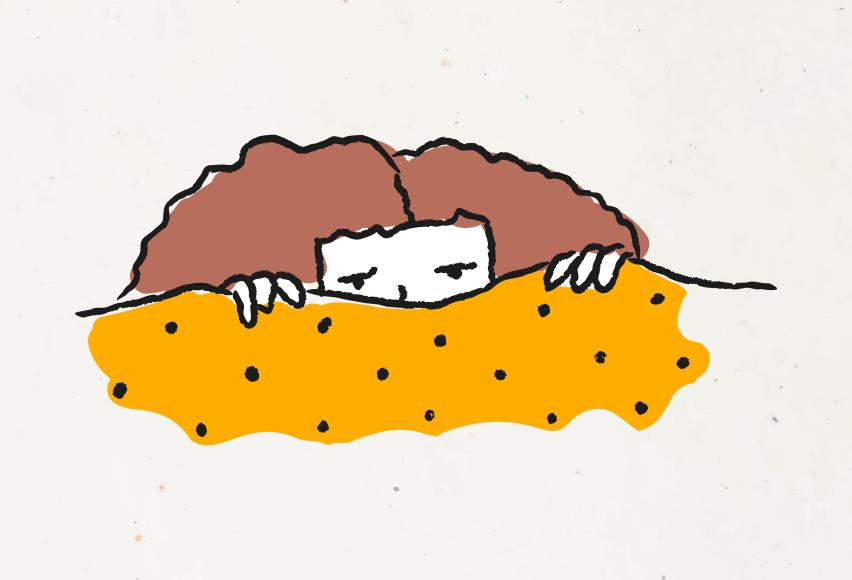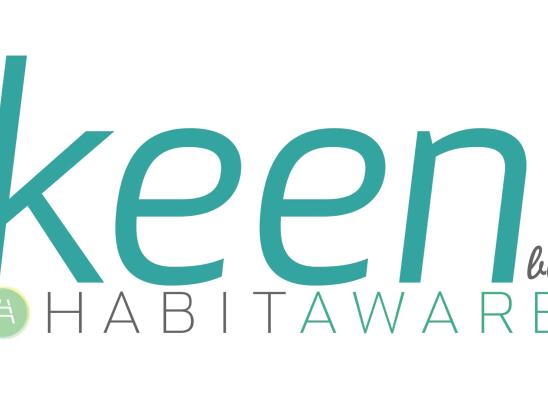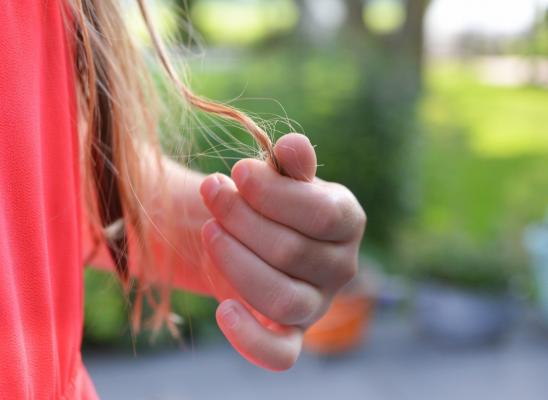
Online test
Find out the severity of your symptoms with this free online test
If you or someone you love is living with trichotillomania or other body-focused repetitive disorder (BFRB), you probably find yourself looking for things that can bring you some relief or help you cope with the resulting hair loss. Sometimes strategies work. Sometimes they don’t. Sometimes, your go-to strategy just isn’t practical for where you are in that moment.
Episodes of pulling can be triggered for any number of reasons – a sensation, a feeling, or thoughts that are bothersome, or something else. And those urges can strike at some of the most inopportune moments.
The resulting hair loss can present quite a dilemma. You want to be able to look your best. You don’t want to have to answer questions. And hats and scarves get old. You just want to be able to look and feel comfortable in the moment.
Is this even possible? While there’s no one strategy that is “the one”, people living with trich are among the best experts for finding things that work. What do others do to manage their trich?
Many people living with trich and other BFRBs recommend having multiple ways to cope with the urges to pull. Having a toolbox of strategies that you can pull from means you can be prepared no matter where you are.
Urges to Pull
When the urge to pull comes, a useful and often mentioned way to prevent hair pulling is to keep your hands busy doing something else. Things like spinners or fidget toys, writing, doing a craft, or holding something with a pleasing texture, like a keychain or bracelet seem to help. Even popping bubble wrap can keep those hands busy!
Here’s a way to keep hands busy that you can do anywhere: make fists with both of your hands. Make the kind of fist that feels best to you. Count to 100, concentrating on each number. Think about each number. Visualize it. Now stretch out your fingers. If you still feel like pulling, make another fist and do it again. As your focus shifts to counting, you may feel the urge lessen. You can repeat this strategy as often as you need to, and the great thing is no one needs to know you’re doing it.
SCAMP
Trich is more than just an urge to pull. It’s a complex disorder with several dimensions. The Comprehensive Model for Behavioral Management of BFRBs (ComB) recognizes five distinct components (SCAMP) of BFRBs:
Sensory
Cognitive
Affective (emotions)
Motor
Place (environment)
It has been suggested that viewing coping strategies through the lens of the SCAMP approach might also be helpful in interrupting or even preventing an episode of pulling. A recent article made suggestions for each SCAMP category that might be helpful. You can read more here but some of those strategies identified include:
Sensory –
- Touch-toys /fiddles/fidgets
- Music
- Drawing
- Popping bubble wrap
- Pay attention to the sensory experience of other tasks
Like the Zen practice of washing dishes with focus.
Cognitive –
- Checking in with yourself. Identify sources of worry. What’s on your mind? Be on the lookout for rumination.
- Visualize using your tools.
- Practice acceptance and gratitude.
- Talk to a friend first.
- Wait 15 minutes
Affective (emotional) –
- Use positive affirmations
- Journaling
- Co-counseling – a kind of peer counseling that provides a safe space to express feelings.
- Find a Support Group
- Plan for risky times (e.g., downtime, bedtime)
- Breathing Exercises
Motor –
- Fiddle/fidget toys
- Rubber bands
- Exercise
- Various arts and crafts (e.g., cross stitch, knitting)
- Band-Aids or “thimble pads” on fingers
Place (your environment) – (depends on where you tend to pull/pick)
- Remove or avoid mirrors if they tend to trigger urges
- Bathroom lights off or dimmed
- Fiddle toys in obvious trigger spots
- Visual reminders/notes
- Be around others or get support when you can
- Remove tools from easy access
These are just a few of the many, many strategies that people use to mange their trich. What you use will depend on your unique needs.
Dealing with the Hair Loss
One of the results of repetitive hair pulling is the loss of hair leaving bald patches that can be hard to cover. Hats and scarves become a must-have item. But what if you want to wear your hair down or styled another way?
The good news is there are tips and products that can give you options. You can style your hair in ways that help you look and feel your best.
- Alternate where you part your hair. Change it up every time you wash your hair. Why change your part? If you tend to pull along your part, changing the part can help to more evenly distribute the hair loss so it’s not as noticeable in one spot.
- Use hair products like mousse and hairspray to keep short hairs in place.
- Camouflage a small bald spot using an eyebrow pencil that matches your hair color. For larger areas, look for color products that can be used to cover balding areas such as color sprays and sticks.
- Consider a hair weave or cornrows.
- Treat yourself to some cute hair accessories. Let your personal style and creativity shine through!
For Parents
It’s great to have strategies but what happens when the person with trich is a child? Onset of trich tends to be in late childhood to early teens. Kids at this age still rely on mom and dad to provide them with things they need. If you’re a parent of a child with trich, how can you help fill their toolbox? Here are some recommendations from the TLC Foundation for BFRBs:
- Be an open door and a safe place for your child. Encourage them to come to you when they have the urge to pull. Sit quietly with them. You may rub their back or gently stroke the scalp which can help to calm their nervous system. Touch is a powerful way to help to soothe them and let them know that everything is ok.
- Notice when your child is most likely to pull and have a plan. For example, kids often pull while watching TV. One strategy that has worked for lots of families is to use a “TV toy”. With your child on board with the plan, keep a fiddle or fidget “TV toy” available to be held when your child is watching TV. If you notice the child pulling, turn off the TV and take a “break” – stand up and stretch for a minute before going back to watching TV. This “break” is not a punishment for pulling. It’s a way to disrupt the connection between TV and pulling.
Other ways you can help your child deal with their trich is to give them easy access to things like fidget toys, drawing or art supplies, and other things that can help them cope. Fidgets and other sensory items like fuzzy side of Velcro or a squishy stress ball or even a small river rock are just a few examples of the many items that they can use discretely almost anywhere. Be sure to have a conversation with the teacher to avoid any issues with using a fiddle at school.
Depending on how your child pulls, you may restrict access to “tools” they might use like tweezers.
If your child is experiencing noticeable hair loss, offer them the opportunity to choose ways to manage their appearance. You might think the ball cap looks great, but they might not think so. It’s ok to ask them about their preferences for hair styling and accessories. Offer to help them find solutions that allow them to feel comfortable among their peers.
The Takeaway
These are but a few of the many, many tips, tricks, and strategies for managing trich. Not every strategy will work for every person because everyone is unique in their trich experience. The important thing is to find what works for you. Connect with others who are living with trich too. Sometimes the best advice comes from someone who understands the experience firsthand.
References
1. TLC Foundation for Body-focused Repetitive Disorders. (n.d.). Toolbox tips for Trich. Retrieved from https://www.bfrb.org/learn-about-bfrbs/treatment/self-help/141
2.TLC Foundation for Body-focused Repetitive Disorders. (n.d.) Expert Consensus Treatment Guidelines: Body-Focused Repetitive Behaviors https://www.bfrb.org/storage/documents/Expert_Consensus_Treatment_Guidelines_2016w.pdf
3. Yeomans, A. (n.d.). List of strategies for skin-picking. Retrieved from https://www.bfrb.org/learn-about-bfrbs/treatment/self-help/127-rs-list-of-strategies-for-skin-picking-49-im-using-42-i-could-try
4. TLC Foundation for Body-focused Repetitive Disorders. (n.d.). Toolbox tips for Trich. Retrieved from https://www.bfrb.org/learn-about-bfrbs/treatment/self-help/141
Online test
Find out the severity of your symptoms with this free online test
Start your journey with TrichStop
Take control of your life and find freedom from hair pulling through professional therapy and evidence-based behavioral techniques.
Start Now



